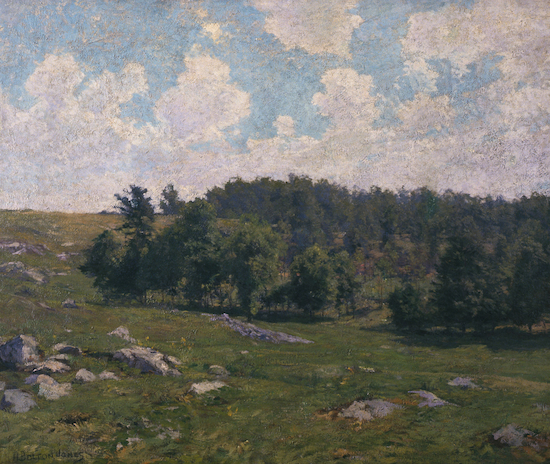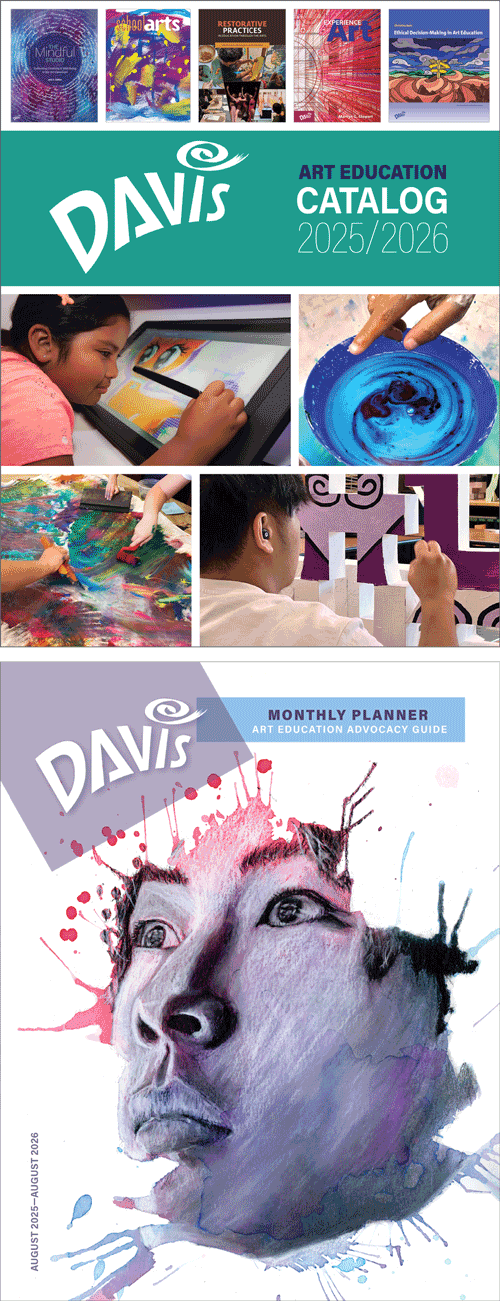Artist Birthday: Hugh Bolton Jones
Hugh Bolton Jones was one of the many American artists whose painting was influenced by the French Realist Barbizon school in the late 1800s. He enthusiastically embraced the technique of en plein air (in the open air, outdoors) painting.
Artist Birthday for 20 October: Hugh Bolton Jones (1848-1927 US)
 |
| Hugh Bolton Jones, Stockbridge Meadows, 1880s?, oil on canvas, 74 x 89 cm © 2025 Butler Institute of American Art, Youngstown, OH (BIAA-166) |
Jones lived in New York after 1881, but spent summers painting and sketching in the Berkshires of western Massachusetts, where he produced this work. Stockbridge Meadows clearly shows a Barbizon-like view of nature in this harmonious and subtle composition. Jones, however, was often criticized for sticking to the careful (overtly minute detail) description of nature which characterized the Hudson River School painters. This is especially clear in the highly detailed foreground of rocky terrain. His works were praised, in contrast, for the careful depiction of light, indicating that his landscapes were painted out of doors, as the Barbizon artists advised American artists who visited the colony in the late 1800s. Although he spent time at the Pont-Aven art colony which nurtured the painting of Paul Gauguin (1848-1903), little of that school's insistence on non-local color and build up of form through shapes is evident in this painting.
Background
In the late 1850s and 1860s, French painting, particularly the Barbizon landscape painting school, was introduced into mainstream American painting by several artists who had visited France. It offered artists an alternative to the entrenched Hudson River School style of romantic realism in landscape. Barbizon was a renegade art colony outside of Paris that rebelled against what they perceived as the aesthetically bankrupt Academic tradition of painting. The Barbizon artists preferred to paint directly from nature outdoors, and find subject matter from real life. The art of Hugh Bolton Jones is an interesting combination of both Hudson River School and Barbizon influences.
Jones was born in Baltimore. He attended drawing classes as a teen, and then studied painting in New York under landscape painter Horace Robbins (1842-1904), a close associate of Hudson River School master Frederic Church (1826-1900). It is probably Church who influenced Jones' tendency towards exacting detail of nature in the foreground of his landscapes. In 1867 he returned to Baltimore where he set up a studio.
Jones was exposed to many contemporary painting trends in Europe. He spent the summer of 1870 in Britain and Ireland. In 1876 he went to Paris where he studied at the Academy Julian, where some of the Impressionists had studied. He visited the Pont-Aven art colony, and also traveled to Switzerland, Belgium, Italy and North Africa, although these trips do not appear to have had much impact on his essentially realist style. He adapted the en plein air painting after seeing the works of the Barbizon realists. Returning to America in 1881, he established a studio in New York, where he was elected an associate of the conservative National Academy of Design that same year.

Comments